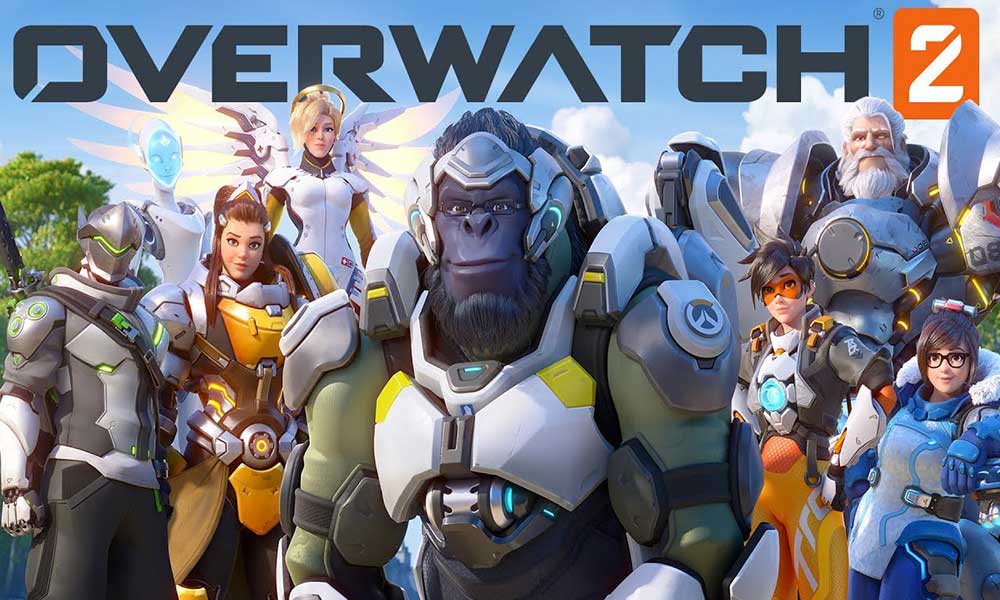Regarding the online first-person shooter video games from Blizzard Entertainment, Overwatch 2 is the latest release as a sequel to the successor of 2016’s Overwatch. Though the title is doing quite well among PC gamers, it seems that some bugs or errors are troubling a lot of players these days. Meanwhile, the Overwatch 2 Rendering Device Lost Error becomes one of the common issues which crashes the game while launching on the PC.
This error triggers a ‘TDR (timeout detection and recovery)’ incident while playing Overwatch 2 and prevents it from loading completely. It starts crashing and closing automatically while startup. Luckily, Blizzard Support is aware of this particular error and officially acknowledged it. The best part is that Blizzard Support has provided some potential workarounds for the Overwatch 2 players to try resolving the rendering device lost error easily.
Also Read

Page Contents
How to Fix Overwatch 2 Rendering Device Lost Error
Now, if you’re also one of the victims to encounter such an error quite often then don’t worry. You can follow the troubleshooting methods below to fix this issue on your end. So, without further ado, let’s get into it.
1. Reboot Overwatch 2
First of all, you should restart your Overwatch 2 game on the PC from the Battle.net client which might help in fixing the rendering device lost issue. So, give it a try.
2. Close Background Processes
In some cases, unnecessary background running tasks might trigger performance issues with the system which can occur lags, frame drops, stutters, crashes, and more. You should close the background tasks one by one by following the steps below:
- Press the Ctrl+Shift+Esc keys to open Task Manager.
- Click on the Processes tab > Click to select the task that you want to close.
- Select End Task to close it.
- Do the same for other unnecessary background running tasks one by one.
3. Check for Overwatch 2 Updates
An outdated game version might trigger multiple issues with the game launching or connecting to the game servers. You should always check for the game update manually by following the steps below on your PC to fix several issues.
- Open the Battle.net launcher app on your PC.
- Click on the Overwatch 2 game.
- Next, click on the Settings menu (cogwheel icon) > Select Check for Updates.
- Wait for the update process to be completed.
- If there is an update available, you should download and install the update.
4. Verify and Repair Game Files
In some cases, missing or corrupted game files on the PC might trouble you a lot when it comes to the game launching as well as getting into the matchmaking sessions. So, you can try verifying and repairing the game files via the launcher by following the steps below.
- Launch the Battle.net client on your PC.
- Click on Overwatch 2 > Now, click on the Settings menu (cogwheel icon).
- Select Scan and Repair > Click on Begin Scan.
- Wait for the repair process to complete.
- Once done, reboot the PC to apply changes.
Also Read
5. Update GPU Drivers
An outdated device driver can always cause multiple issues to your system or while using programs in the long run. If the device driver hasn’t been updated for a while, the issue starts triggering quite often. So, it’s suggested to updating your necessary device drivers by following the steps below:
For Device Manager:
- Press the Win+X keys to open the Quick Link Menu.
- Click on Device Manager > Double-click on the respective driver.
- Now, right-click on the respective graphics card device.
- Select Update driver > Click on Search automatically for drivers.
- If the latest update is available, it’ll automatically download and install the update.
- Once done, the system will reboot to apply changes.
For Nvidia:
- Download the NVIDIA GeForce Experience via the official website.
- Open the NVIDIA GeForce Experience app > Click on the Drivers tab.
- Now, click on Check for updates in the upper right corner.
- If there is an update available, follow the onscreen steps.
For AMD:
- Right-click on your desktop screen.
- Click on AMD Radeon Settings > Click on the Home icon.
- Now, select New Updates in the bottom left corner.
- Select Check for update > If there is an update available, you can follow the onscreen steps.
6. Check for the Overheating Issue
You should also check for the overheating issue on your computer to ensure there is no issue with the heating. Overheating can occur a performance decrease that will trouble a lot with the game launching or playing games.
7. Restore Default to Overclocked CPU or GPU
Sometimes overclocked CPU or GPU on the PC might cause conflicts with the other hardware which may trigger a bottleneck issue. It’s better to temporarily disable or restore the overclocked CPU/GPU to the factory default so that you can check out the potential reason behind the crashing issue. There are multiple tools available online to adjust overclocked CPU or GPU on the PC such as MSI Afterburner, Riva Tuner, AMD Ryzen Master, EVGA Precision X, etc.
That’s it, guys. We assume this guide was helpful to you. For further queries, you can comment below.
